Draw a city in perspective
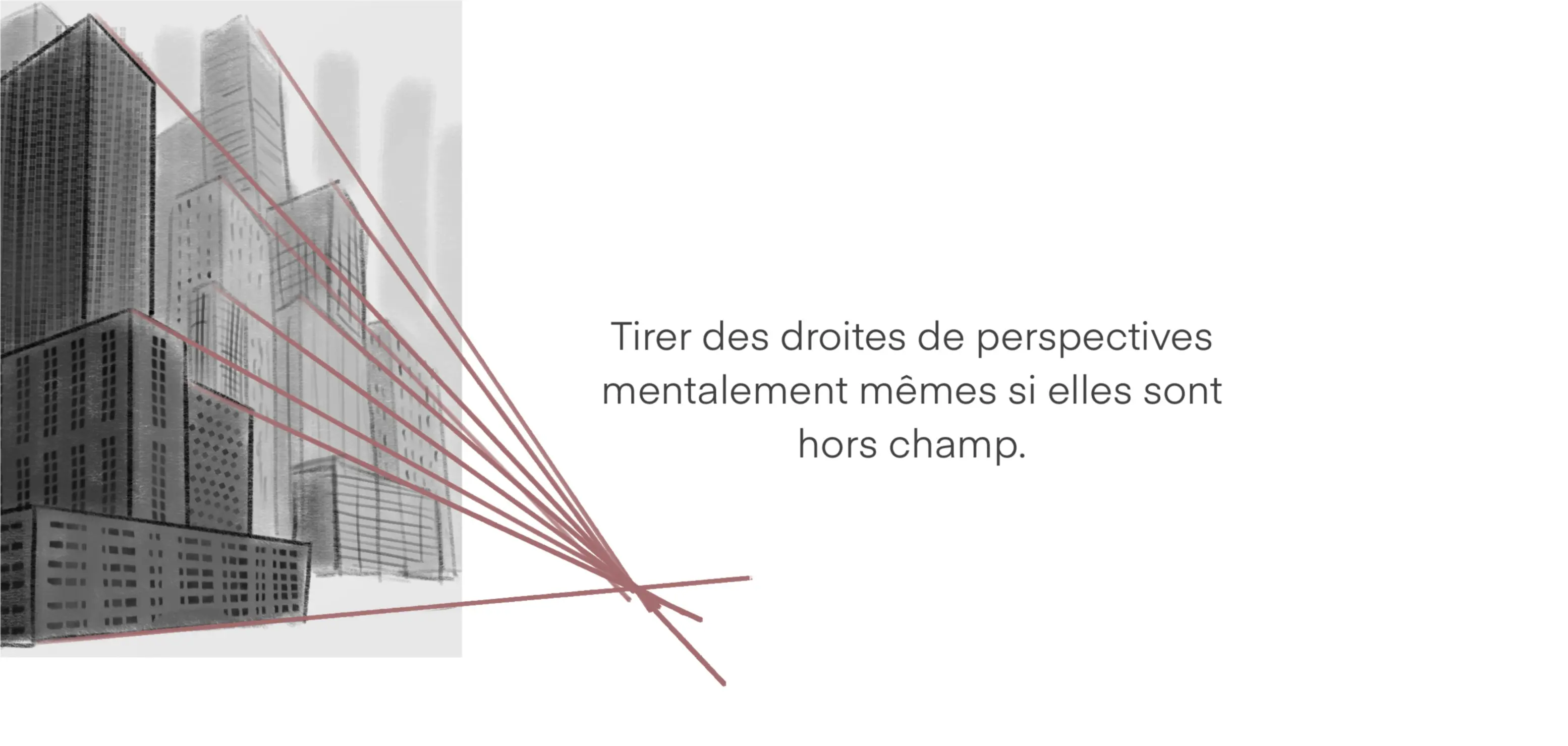
Hello everyone, in today's article, we are going to look at how to draw a city in perspective. We often tend to associate perspective with something long and tedious, and that's not untrue, as it relies more on technique than creativity. However, you will see that drawing a city in perspective is often less complex than it seems.
Prepare your ruler, your pencils, and especially your creativity! Let's go!
Reminder on Perspective
It would be inappropriate to begin this article about a city in perspective without a brief reminder of what perspective is. Simply put, perspective is a technique that gives depth to a drawing. There are two terms you need to know:
The horizon line: it's an imaginary (or not) line towards which the gaze is directed into the distance. Generally, it marks the separation between the earth and the sky.
Vanishing points: these are imaginary points towards which the lines of objects will converge.
Vanishing points are ALWAYS on the horizon line.
One-point perspective is used to draw scenes where all parallel lines converge at a single point on the horizon. This creates the illusion of depth, like a road that seems to narrow in the distance. It is ideal for simple frontal views.
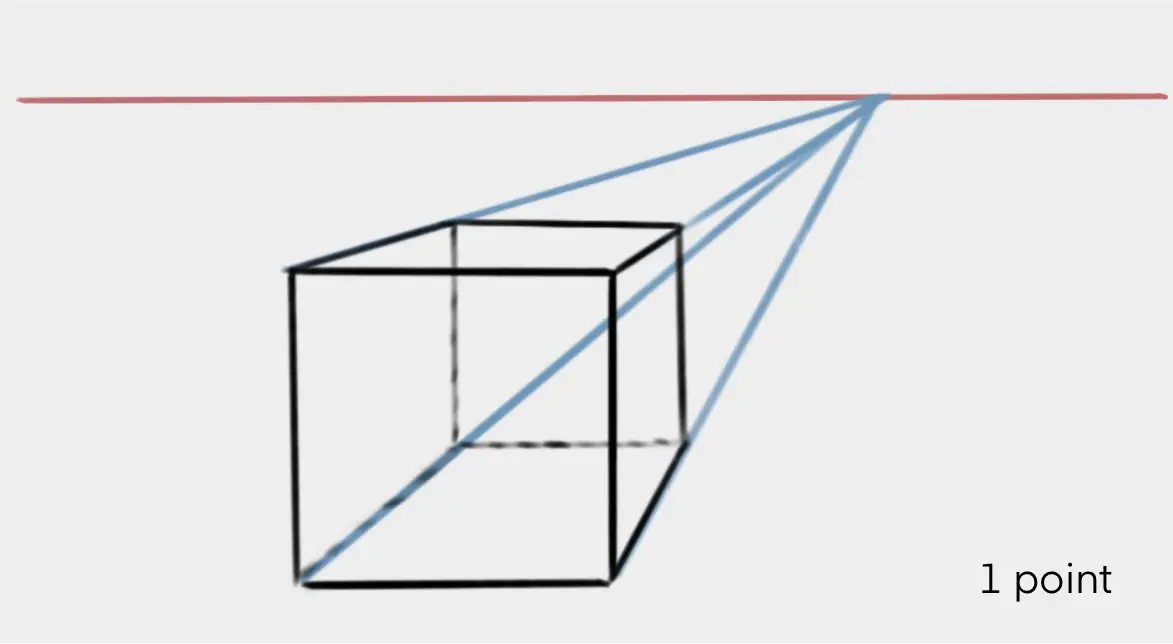
Two-point perspective is used when looking at an object or building from the side. The parallel lines converge towards two different points on the horizon, creating an illusion of volume and depth. It is perfect for creating corners or oblique views.
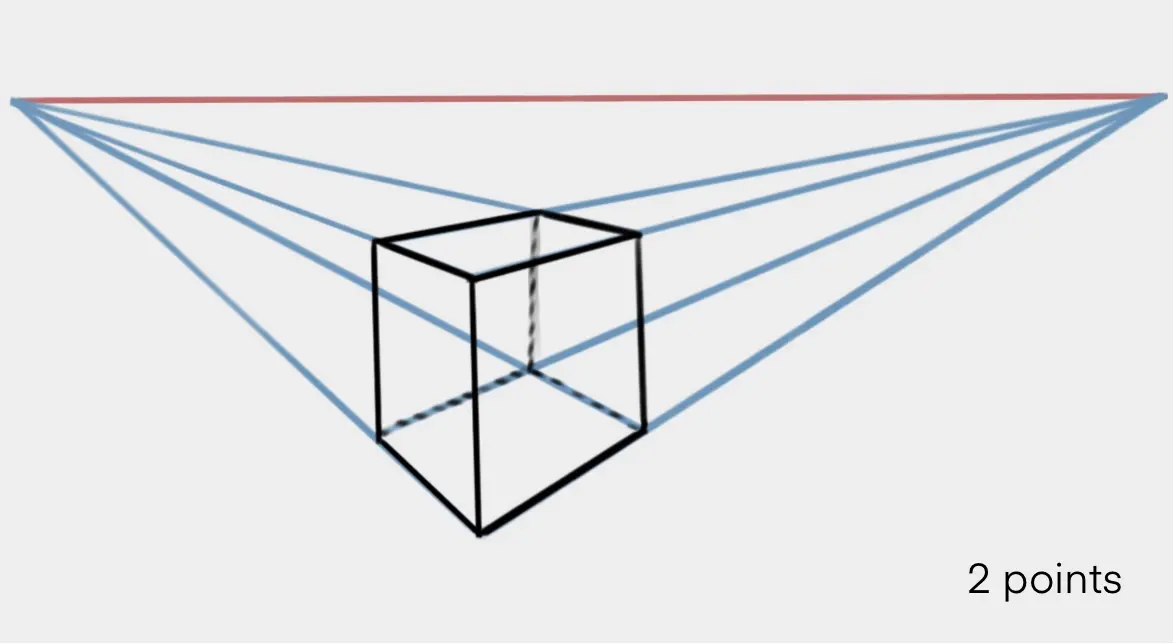
The three-point perspective is used for extreme views, with three vanishing points: two on the horizon and one either at the top or bottom. It allows for drawing scenes of great height or great depth. It is ideal for views from a skyscraper or the base of a building.
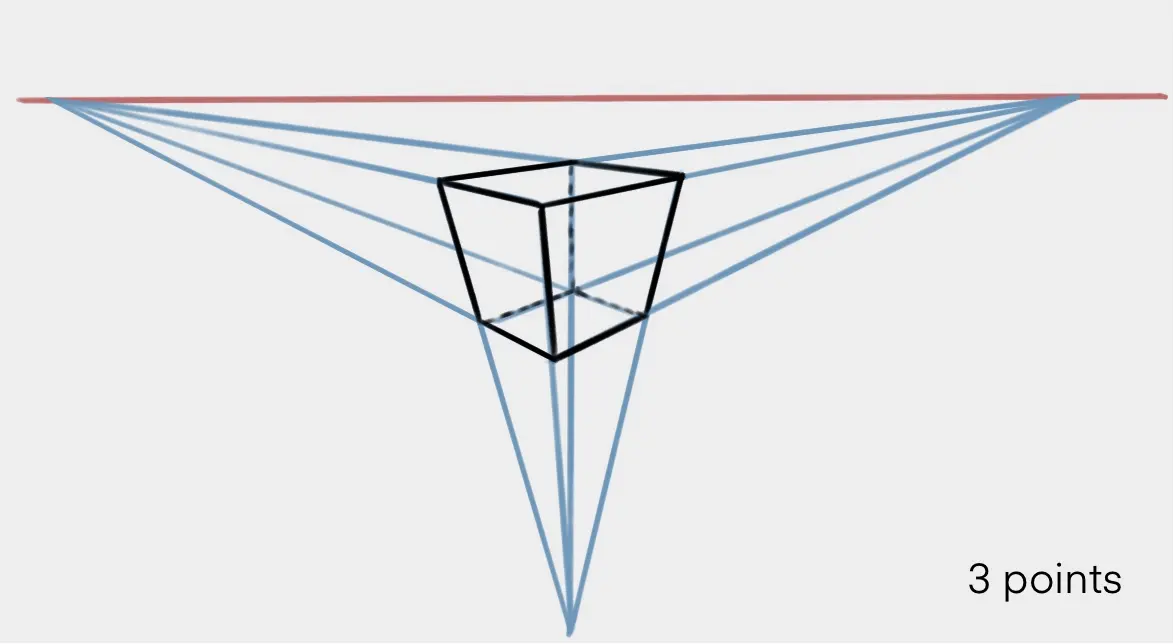
Of course, there are perspectives with 4, 5 or even 6 vanishing points, but the most used are those we just looked at, and they will be more than enough to draw a city.
Break down elements to draw them better
When we want to draw complex elements, like a house or even a city, it can happen that we don't know where to start because the task seems so huge. Yet, and you must see it coming if you are a regular, there is an easy way to draw everything: break it down!
The decomposition method involves breaking down an element into its most basic forms and volumes to make it easier to draw. It always starts with simple volumes and the details are added later.
This method is all the more true for a city drawing, as you will see that with only parallelepipeds, you can suggest a quite believable city.
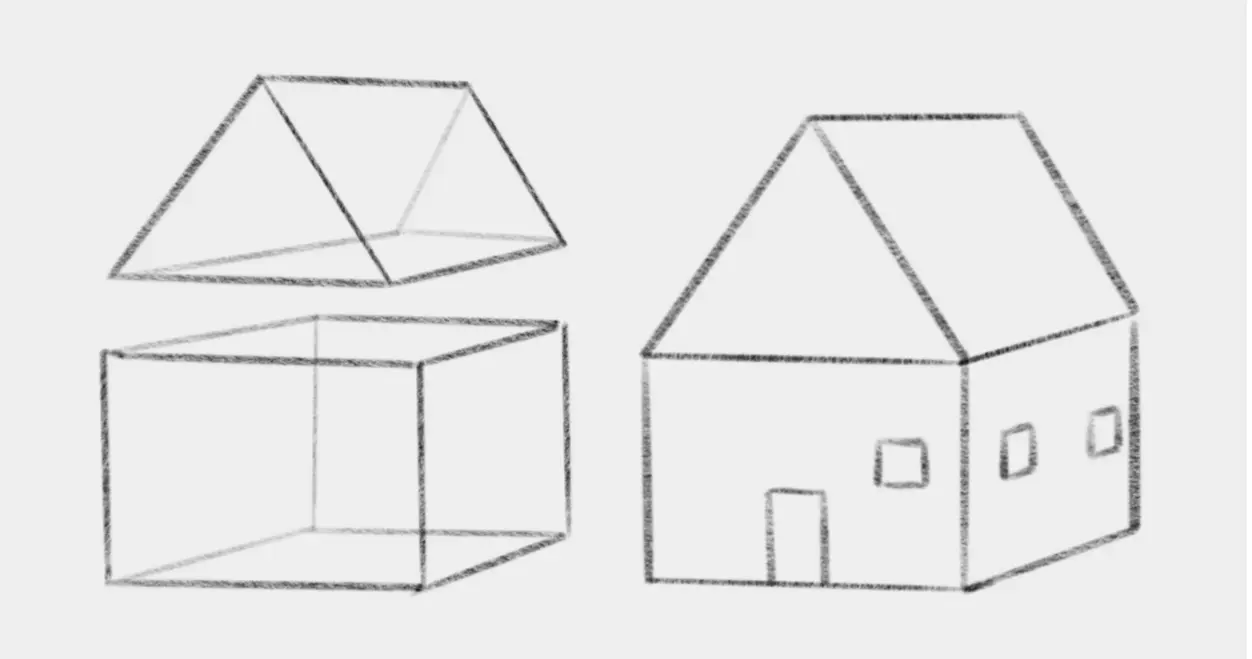
Assemble the shapes
From the moment you understand how to draw a cube/cuboid in perspective and how to break down your elements, you have all the cards in hand to succeed in creating complex scenes.
For this, imagine that it is a simple building game where you will assemble all your simple shapes to create a complex rendering brick by brick.
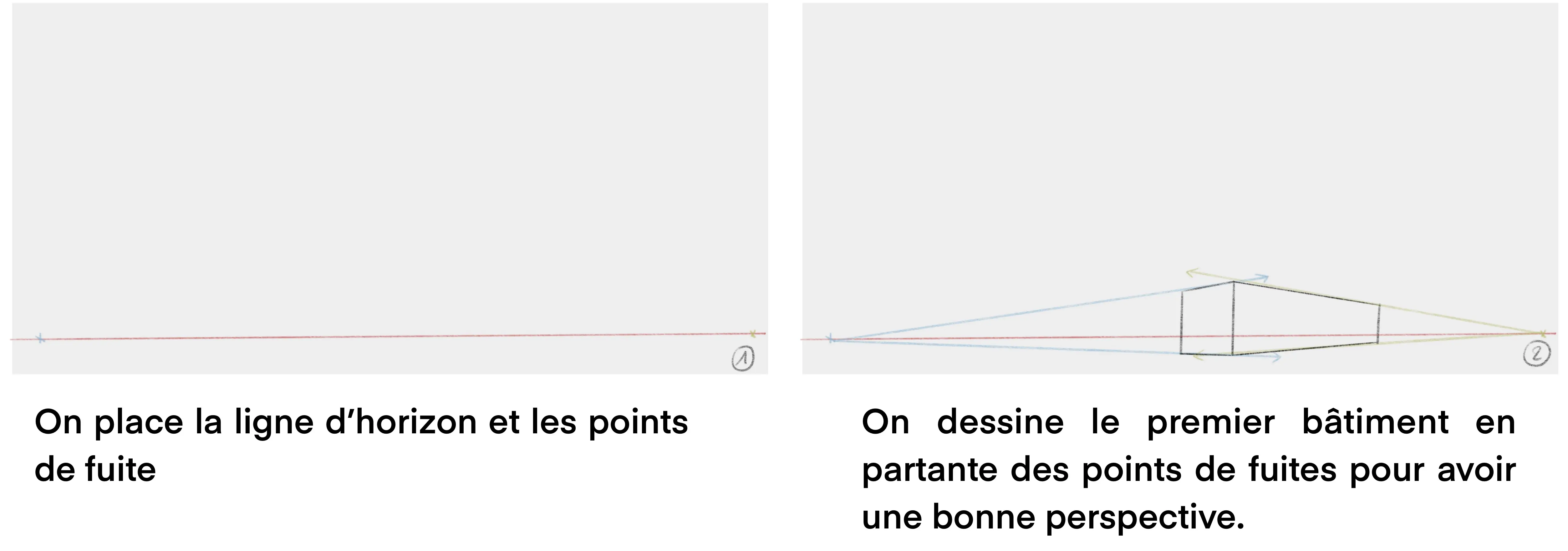

As you can see, assembling is quite easy. Yes, it's tedious and requires concentration to not get the perspective wrong so that everything is cohesive, but once you've got the mechanics down, you'll see, you can have fun with much more complex perspectives that will be truly impressive!
Here are some examples of assembling simple shapes that already suggest city views. As you can see, the atmosphere and dynamics of the scene change depending on the number of vanishing points used. It will be up to you to choose the right vanishing points to convey the scene you have in mind.

Giving depth to a city
Once you arrive at this stage, you have already done the hardest part. But now is when the look of your city will change! We've added depth through perspective, but we can still go further with details.
As this article remains rather theoretical, I will not go into very realistic and detailed specifics. Here, we focus solely on the fundamentals to add depth. If you wish to learn how to better depict urban details or materials, I invite you to consult our article: drawing an urban landscape (link).
Here's how to add depth in a few key steps:
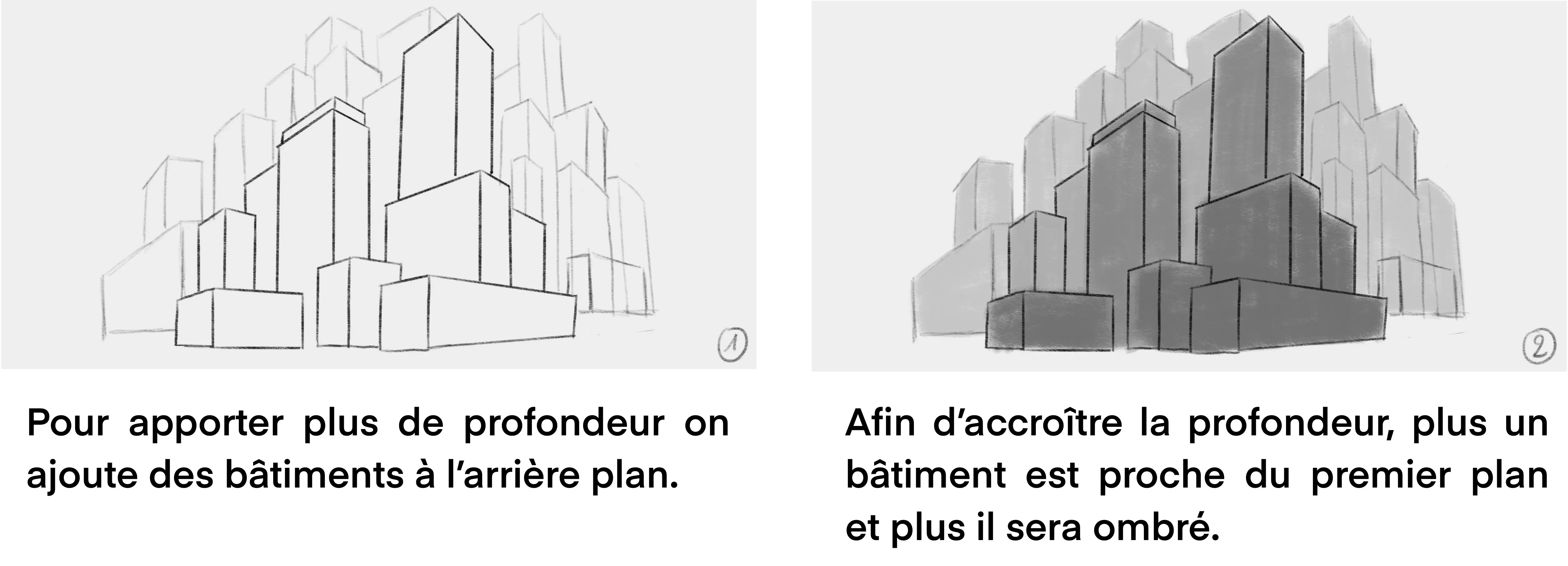
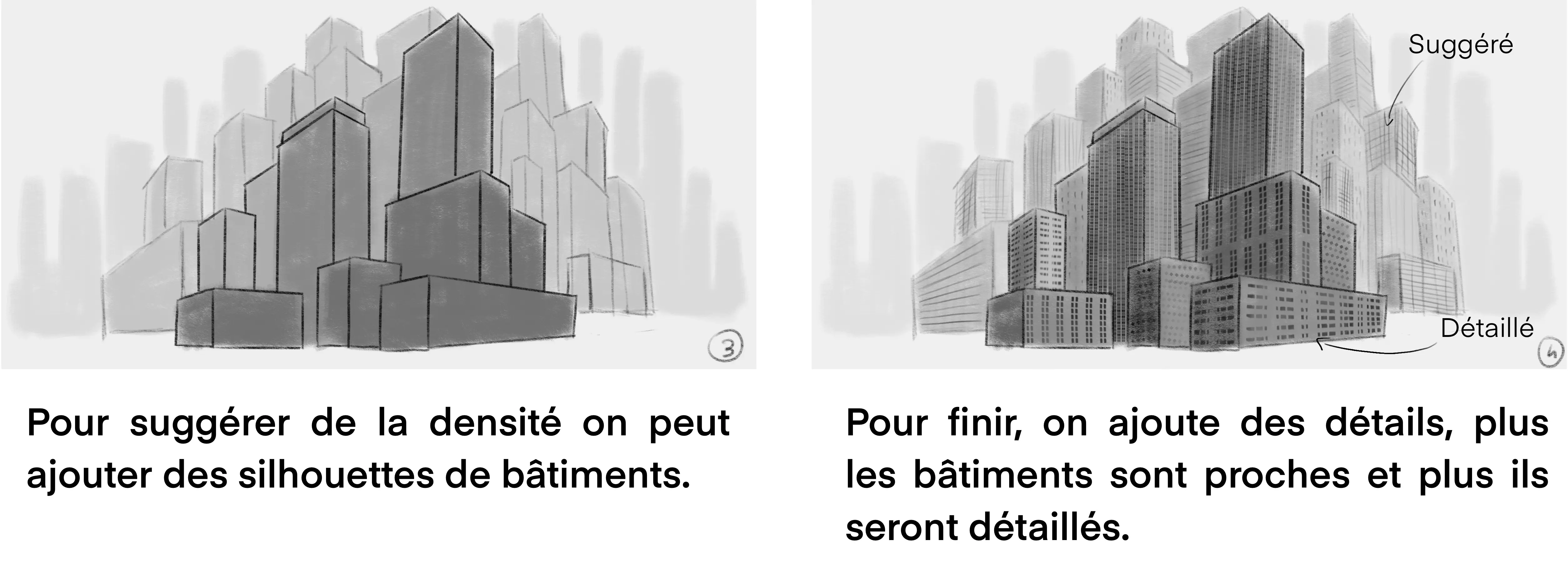
Can you draw a city in perspective without a vanishing point?
It may be that in the image you have in mind, or depending on the format of your paper, you might not be able to draw the perspective points needed to construct your city.
There are a few solutions to address this problem.
The first solution is to draw a preliminary sketch of a larger city by plotting the vanishing points, then choose a part of this city that you like. You will then need to redraw this city, trying to maintain the same perspective, but without drawing the vanishing points.
It can be a bit challenging at first, but you'll see that your eye will quickly adapt and you will make rapid progress in perspective.
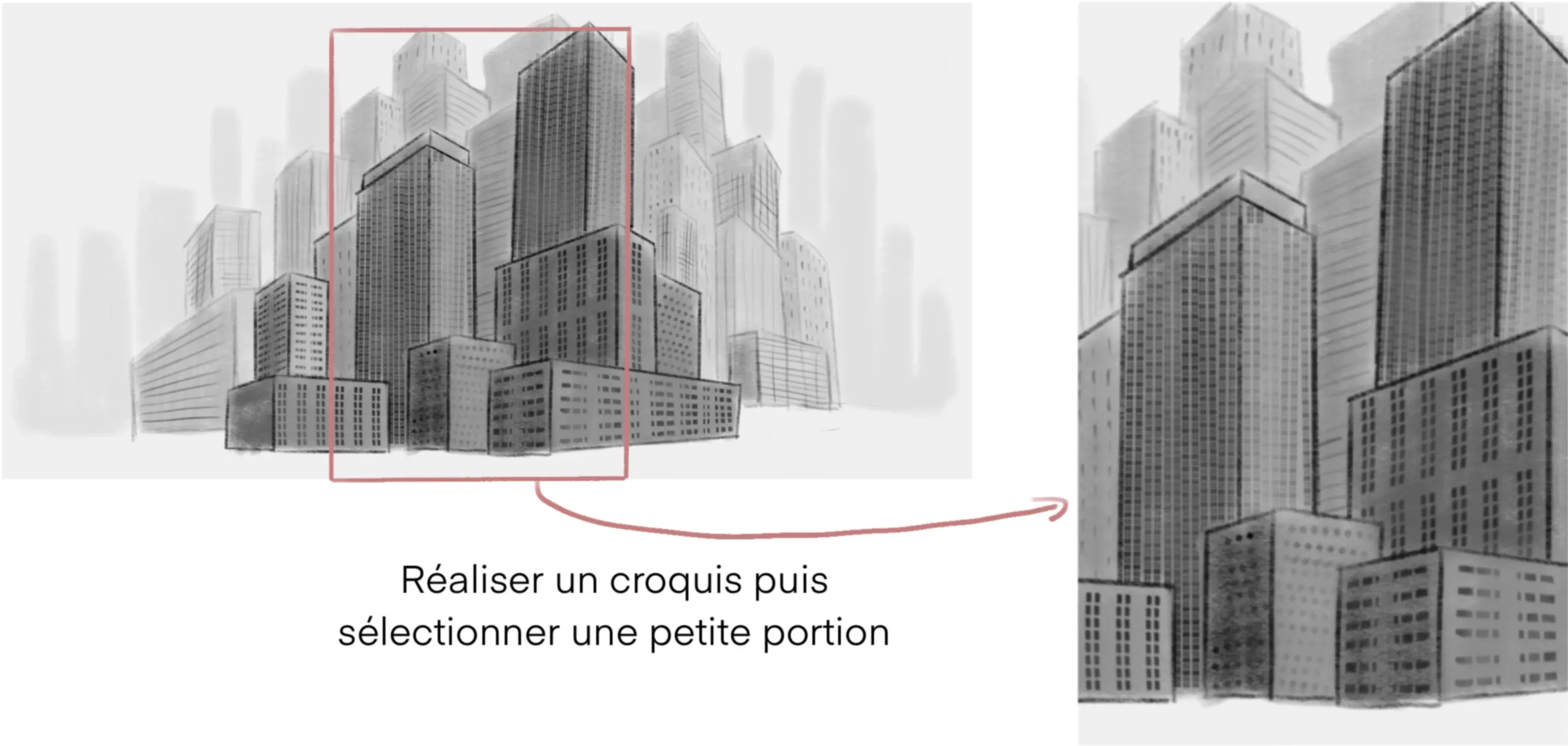
The second solution, which I recommend, is to learn how to mentally draw vanishing points. The idea is to draw your scene starting from simple volumes, then check if the overall perspective is consistent. This will require some practice, but it is by far the best way to learn.

You might be tempted to draw the vanishing points on your table or by slipping a sheet of paper under your sheet. This can indeed work, but it is far from the best solution. Of course you can do this if you want to be completely reassured by actually drawing your vanishing points, but I strongly encourage you to train your eye by mentally plotting the vanishing points.
One last similar option is to just place a small marker object and use a ruler to check the vanishing points. It’s a good transition to learn how to mentally check your vanishing points while still having a guide, but, like the previous method, it still has a large margin of error because any slight movement can shift all your markers or your paper and skew the verification you were doing.
And there you have it! I hope that this very theoretical article has given you some insights into drawing cities in perspective. You'll find that with a bit of practice, the tedious aspect of perspective gradually disappears, and you'll have fun drawing complex cities. But above all, enjoy drawing! 😊
Writer and Illustrator: Chloé Pouteau

